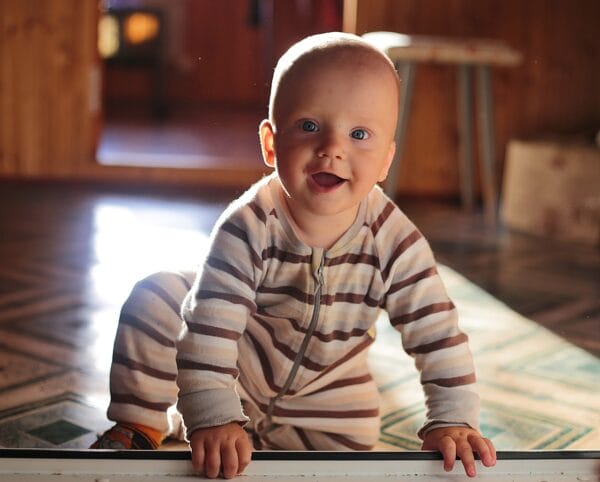Teething Hacks for Babies: Soothing Your Little One’s Gums
When babies begin teething, it often marks a period of discomfort and restlessness for both the infants and their parents. Teething can start as early as 3 months and continue up to 3 years of age as different teeth make their grand entrance. This process can lead to sore gums, excessive drooling, and a fussy little one. Fortunately, there are numerous “teething hacks” that can provide relief for your baby during this challenging time.
In this article, we will explore some of the most effective teething hacks for babies to help make this phase as comfortable as possible for your child.

Table of Contents
Understanding Teething
![]()
Before diving into the hacks, let’s briefly understand what teething is. Teething is the process by which an infant’s first set of teeth, known as primary teeth, sequentially emerge through the gums. Symptoms can include irritability, disrupted sleep, swollen or tender gums, and an inclination to chew on everything in sight.
Top Teething Hacks for Babies
![]()
Baby teething hacks are simple, practical strategies that can alleviate your baby’s teething discomfort. Here are several that have proven to be effective:
Cold Comforts
- Chilled Teething Toys: Refrigerate teething rings or toys specifically designed for teething. The cold can numb the gums and provide a soothing effect. Make sure these items are not frozen solid, as this can be too harsh for your baby’s sensitive gums.
- Frozen Washcloth: Wet a clean washcloth, twist it into a rope-like shape, and freeze it. Once chilled, give it to your baby to chew on. The fabric texture can be comforting, and the cold helps to reduce inflammation and numb pain.
- Cold Spoon: Place a metal spoon in the fridge to cool, then gently rub the back of the spoon against your baby’s gums. The pressure and cold can provide significant relief.
Pressure Points
- Gum Massage: Clean your hands thoroughly and gently rub your baby’s gums with your finger. The pressure can help ease the baby’s discomfort.
- Teething Biscuits: If your baby is already eating solid foods, offer them a teething biscuit. These hard, edible treats allow your baby to apply pressure by biting down and can be a tasty distraction.
Distraction Techniques
- Playtime: Engage your baby in play to take their mind off the discomfort. Sometimes a good distraction is the best remedy.
- Change the Scenery: Take your baby for a walk or a drive. The change in environment and the motion can be soothing and serve as a distraction from teething pain.
Safe Edibles
- Frozen Fruit in a Mesh Feeder: If your baby has started on solids, place frozen fruit like bananas or strawberries in a mesh feeder. The feeder allows your baby to chew and suck without the risk of choking.
- Cool Foods: Offer chilled purees or yogurt to soothe your baby’s gums while they eat.
What to Avoid
![]()
While exploring various hacks for teething babies, it’s important to know what to avoid:
- Teething Necklaces: Avoid amber teething necklaces, as they pose a choking hazard and there’s no scientific evidence supporting their effectiveness.
- Over-the-Counter Teething Gels: The FDA warns against using teething creams or gels that contain benzocaine or lidocaine, as they can be harmful to infants.
- Small, Hard Objects: Don’t give your baby anything that could be a choking hazard or is too hard for their gums.
When to Seek Help
![]()
If your baby seems to be in extreme discomfort or if you’re concerned about their teething symptoms, don’t hesitate to contact your pediatrician. They can provide guidance and rule out any other potential causes for your baby’s distress.
Frequently Asked Questions
![]()
What are the signs that my baby is teething?
Your baby might start teething anywhere from 3 months to 12 months old. Common signs include drooling more than usual, fussiness or irritability, a slight rise in temperature (but not over 101 degrees Fahrenheit), chewing on solid objects, and swollen or tender gums.
How can I soothe my teething baby’s sore gums?
You can rub your baby’s gums with a clean finger or offer them a rubber teething ring. Make sure the teething ring is solid rubber, as liquid-filled ones might break. You can also cool the teething ring in the fridge for extra relief, but don’t freeze it because it can become too hard and might hurt your baby’s gums.
Can I use teething gels for my baby?
It’s best to avoid teething gels, especially those with benzocaine, unless advised by a healthcare professional. Instead, stick to natural methods like gentle gum rubbing or offering a chilled teething ring.
What kind of teething toys are safe for my baby?
Look for teething toys made of solid rubber and avoid toys with small parts that could break off and pose a choking hazard. Also, avoid teething necklaces, including amber ones, because they can also be dangerous if your baby chokes on the beads or gets strangled.
How can I keep teething toys clean?
Wash teething toys regularly with warm soapy water, rinse them well, and let them air-dry. Check the manufacturer’s instructions to see if the toys are dishwasher safe.
Is it okay to give my baby cold food for teething pain?
Yes, cold foods can be soothing. If your baby is already eating solids, offer them chilled fruit like mashed bananas or a cold cucumber or carrot stick to gnaw on. Just watch them while they eat to prevent choking.
How much drool is normal for a teething baby?
Teething can lead to a lot of drooling. Some babies drool so much that they may get a rash on their chin, chest, or neck. Keep a clean cloth handy to gently wipe away drool and protect their skin with a water-based moisturizer or barrier cream.
Can teething cause a fever?
Teething might cause a slight increase in your baby’s temperature, but it shouldn’t cause a high fever. If your baby has a fever over 101 degrees Fahrenheit, it’s likely due to something other than teething, and you should contact your healthcare provider.
What should I do if my baby won’t eat because of teething pain?
To encourage eating, offer soft, cool foods that are soothing for sore gums. If your baby is old enough for solids, try foods like yogurt, applesauce, or pureed fruits. If they’re still on a liquid diet, cold breast milk or formula might provide relief.
How long does teething pain last for each tooth?
The discomfort from teething can last for just a few days right around the time the tooth is breaking through the gum. However, the overall teething process can go on for a few years as your baby gets all of their primary teeth. Each individual tooth will usually only cause discomfort for a short period.
Conclusion: Easing the Teething Troubles
![]()
Teething is a natural part of a baby’s development, but it doesn’t have to be a period of continuous discomfort. By implementing these baby teething hacks, you can help soothe your baby’s pain and make the teething process more bearable for both of you.
Remember that every baby is unique, and what works for one may not work for another. It may take some trial and error to find the right combination of teething hacks for your baby. Always prioritize safety and consult with your pediatrician if you have any concerns about your baby’s teething or health.
Originally posted 2023-03-18 04:23:06.
